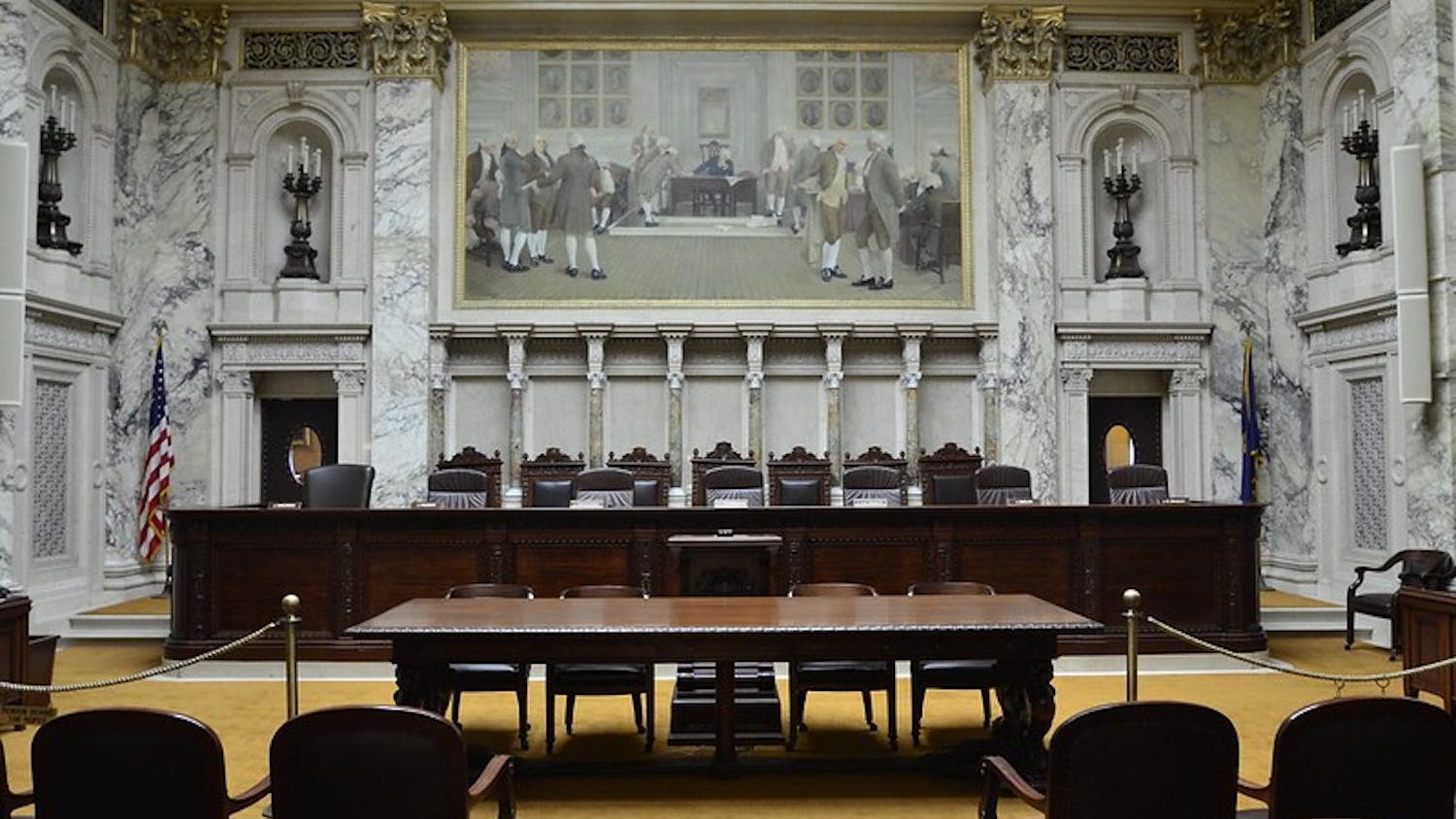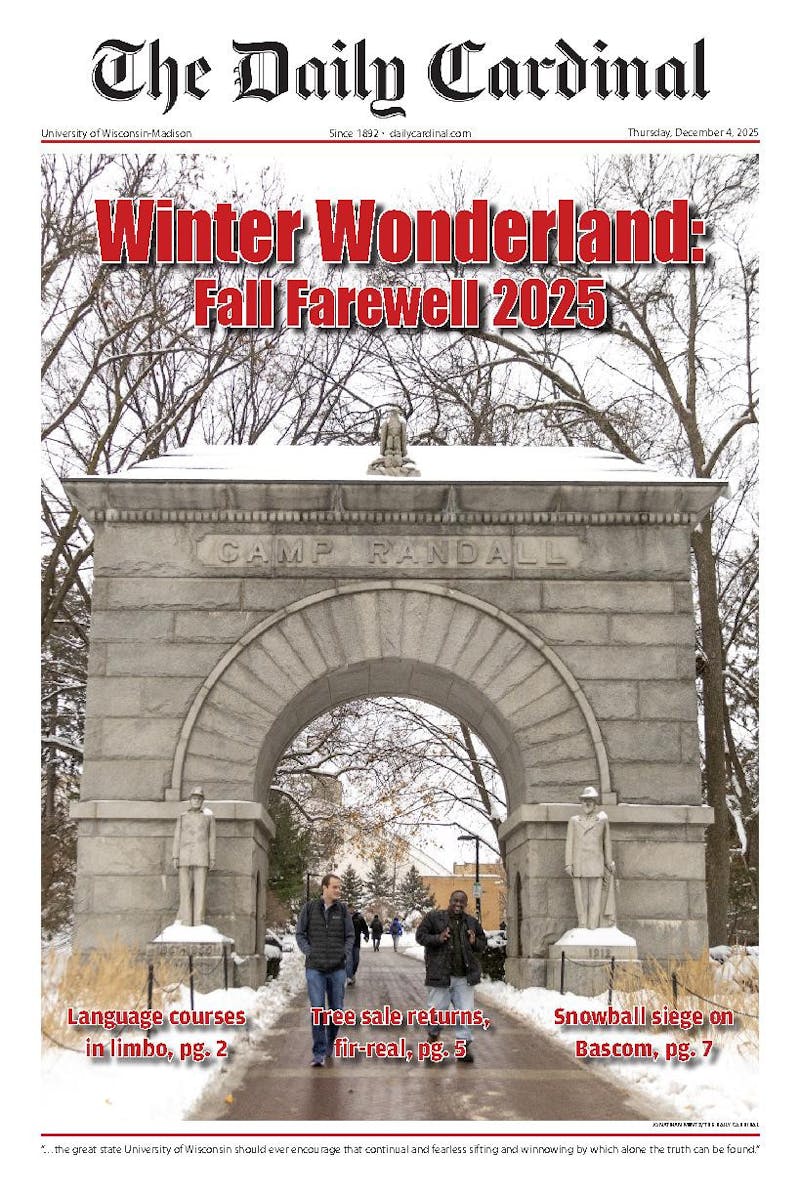Zane Williams, an established Wisconsin photographer, set out to retake the pictures of Angus McVicar, a first-rate photo-man from the early part of the century. The result of Williams' effort is \Double Take"" a rephotographic survey of downtown Madison. Paying attention to the seasonal quality as well as natural lighting, he captured the subject landscapes and people with precise detail.
But the book is not composed of just pictures; it includes introductory essays by Harvey M. Jacobs, Ph.D., editor of ""Who Owns America? Social Conflict over Property Rights"" and a follow-up essay by Yi-Fu Tuan, the author of a dozen books on human geography. Where the photographs show the city, the essays explain it. Noting the changes that this city lurches through, these essays question not just the rate of change but the permanence of it.""Double Take"" shows the city in black and white but implies that it waxes and wanes with the passage of decades. Williams' book is both an account of the inevitability of change and the forces that resist it. The Daily Cardinal recently spoke with Zane Williams.
Were there any rephotographs that absolutely delighted or appalled you?
I would have to say that my greatest joy is to navigate through the book because the book is this progression and the strength of the work lies in the total work and the progression in the pairs of photographs. There are individual pairs of photographs that people respond strongly to because some are more dramatic visually than other pairs and I could point out half a dozen or a dozen pairs that have more visual or dramatic strength and the ability to be provocative.
You don't get all the information from looking at the photographs at a glance, like you do so many photographs today'advertising photographs and newspapers. They're really designed so that you get them quickly because it's our mindset today to digest and move through our landscape quickly.
You can't really do that with this book or with these pairs of photographs. They really require some closer examination if you want to gain and to glean some of the lessons that are in these pairs of photographs.
Was there any reason in particular that the 400 and 500 blocks of State Street don't have any photographs?
There's no particular reason. The photographs that are used are the photographs that made their presence felt. There may not have been many photographs of those blocks that McVicar took. I, in the process of choosing of photographs for rephotographing, look for photographs that I could relocate. That was the first important factor. No. 2, they had to have some kind of recognizable landmark in them so I could place them and so I could find them and the vantage point to rephotograph them.
Besides having the quality photographs and the product of one photographer and one camera format, we also had his logbook. We had the dates that he took these photographs. In some of the cases I took rephotographs within minutes of when he did 40 or 50 years ago, replicating the quality of light and seasonality of the original photographs.
You expressed your interest in the old theaters'what do you think happens to places like The Orpheum or The Barrymore in a place like Madison?
As we've seen in the recent past, we've come close to losing a number of them. All of the these historic theaters in changing times have the press of changing economic times upon them. They become less viable as big old, single use theaters, so they have to become viable by offering additional opportunities for their use.
There's a great sentiment to keep these theaters. Importantly, having a couple of theaters, some architecturally important theaters like The Orpheum or the old Capital Theater Marquee really provide important historic and architectural anchors to State Street. In a sense, they are a lynch pin for downtown Madison.
Do you think the new buildings, such as the Monona Terrace and the Overture Center, are having positive impacts on Madison's architecture and Madison as a city?
I hold high hopes that the Overture Center will be a positive contribution to the downtown fabric. There's just too much citizen interest and oversight for it not to go forward in a positive direction. The Monona Terrace is proving itself in a number of ways. The Monona Terrace, though it's not a civic center, is not particularly a building that the citizens don't visit an awful lot, unless they visit the rooftop terrace or they use it for special events.
Both buildings raise the bar of architecture in this city and I would like to see the bar continuously raised because I think that has been one of the failings of Madison over the past fifty years, the bar of architecture has not been raised.
The term ""urban loathing"" is used in one of the essays of ""Double Take."" Do you think Madison ever suffered from it?
I'm familiar with the term, but it's a term I don't use easily. I understand the point put forward by the author. I think that was a seminal work about those concepts. I am not an urban specialist; I don't have a lot of background in urban design or in Madison history or American urban history. I'm not really an architectural student. I do architectural photography. I'm really a citizen observer.
I filter what I see through certain sensibilities, a broad range of sensibilities that I've accumulated over fifty years about various things I'm interested in. I'm a student of all of these endeavors because I've touched and I've read and I've studied facets of urban design, landscape architecture, local history, the aesthetics of art and photography. All of these issues bear upon how I view the city, so I'm a generalist. I'm a citizen observer.
Did you get nostalgic at times?
Sure, I think it's unavaoidable. It's not an unhealthy thing. A nostalgia for things from the past that have stood a test of time means that we value and appreciate things that were done well from a certain era. The question today is if we design or build things as well as were done back then. These photographs allow us to make some comparisons. They are visual records side by side and they allow us to consider if we have made progress in a positive direction.
McVicar's photographs have been around 50, 60, 70 years and are now being rephotographed through your work. How long before you think it's essential to rephotograph your pictures?
It may surprise some people that it could be as soon as a mere five or ten years. Change is happening just that fast. Rephotographing a particular site doesn't require a certain amount of time to pass. It can be as short as six or 12 months or as long as 20, 30, 50 years.
What do you have in mind for future projects?
I reinvent myself as a photographer after each project because each is so taxing. I am interested more in the landscape as it changes more through the hand of man more than just pictures for postcard versions of the landscape.





